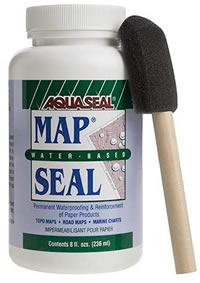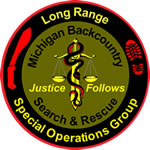
A Rain-or-Shine Wilderness Adventure
4-day
Backpacking and Caving Trip
Pictured Rocks National Lakeshore
Munising, Michigan
July 3-6, 2020
Organized
by
Michael Neiger
Long Range Special Operations Group
Michigan Backcountry Search and Rescue
mneiger@hotmail.com
Marquette, Michigan
South Shore of Lake Superior
| Register for trip | Trip description | Trip info |
| Warnings & advisories | Cartography & land nav | Gear required |
| Free Upcoming Trips, Expeditions, and Wilderness Skills Classes |
||
As part of its community outreach and preventive SAR program, Michigan Backcountry Search and Rescue's (MibSAR's) Long Range Special Operations Group (LRSOG) is hosting a 4-day, intermediate-level, backpacking and caving wilderness trip involving the exploration of the remote, seldom-visited reaches of the Miners River Basin and the Chapel River Basin in and around Pictured Rocks National Lakeshore, east of Munising, Michigan.
Our cross-country route will take us to several of the nicest waterfalls in the Lakeshore as well as dozens of truly-amazing wilderness caves situated over a mile back in the bush from Lake Superior.
Our impromptu night bivouacs will be outside the Lakeshore — rugged and unscouted — wherever we find can find a place to lay down when the sun sets.
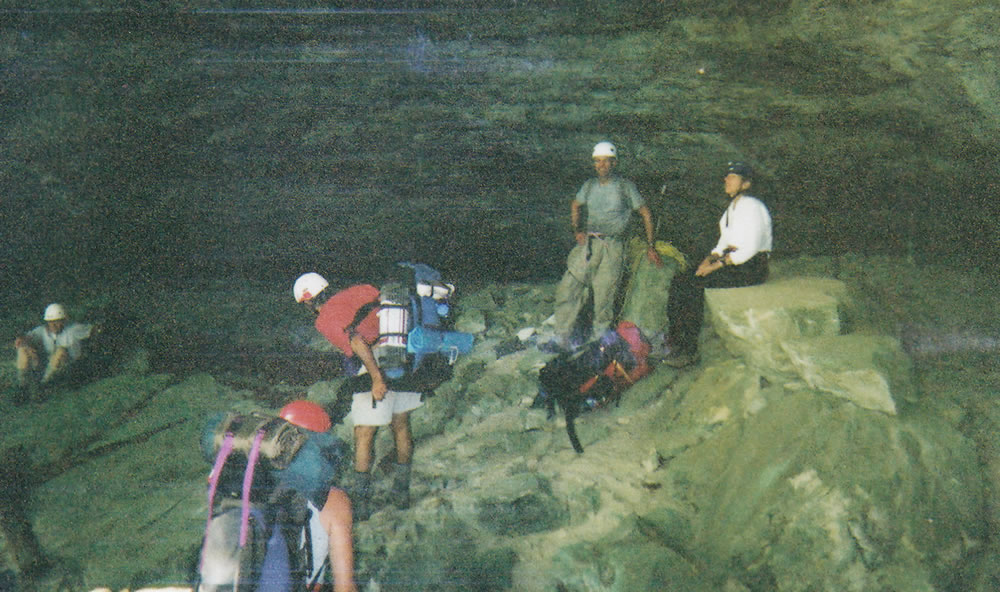
The grottos we'll be visiting will be the best of the best of the 550-plus non-shoreline caves the organizer charted during his years-long field research for Exploring Pictured Rocks — West Half, a map-based guidebook to the Lakeshore.
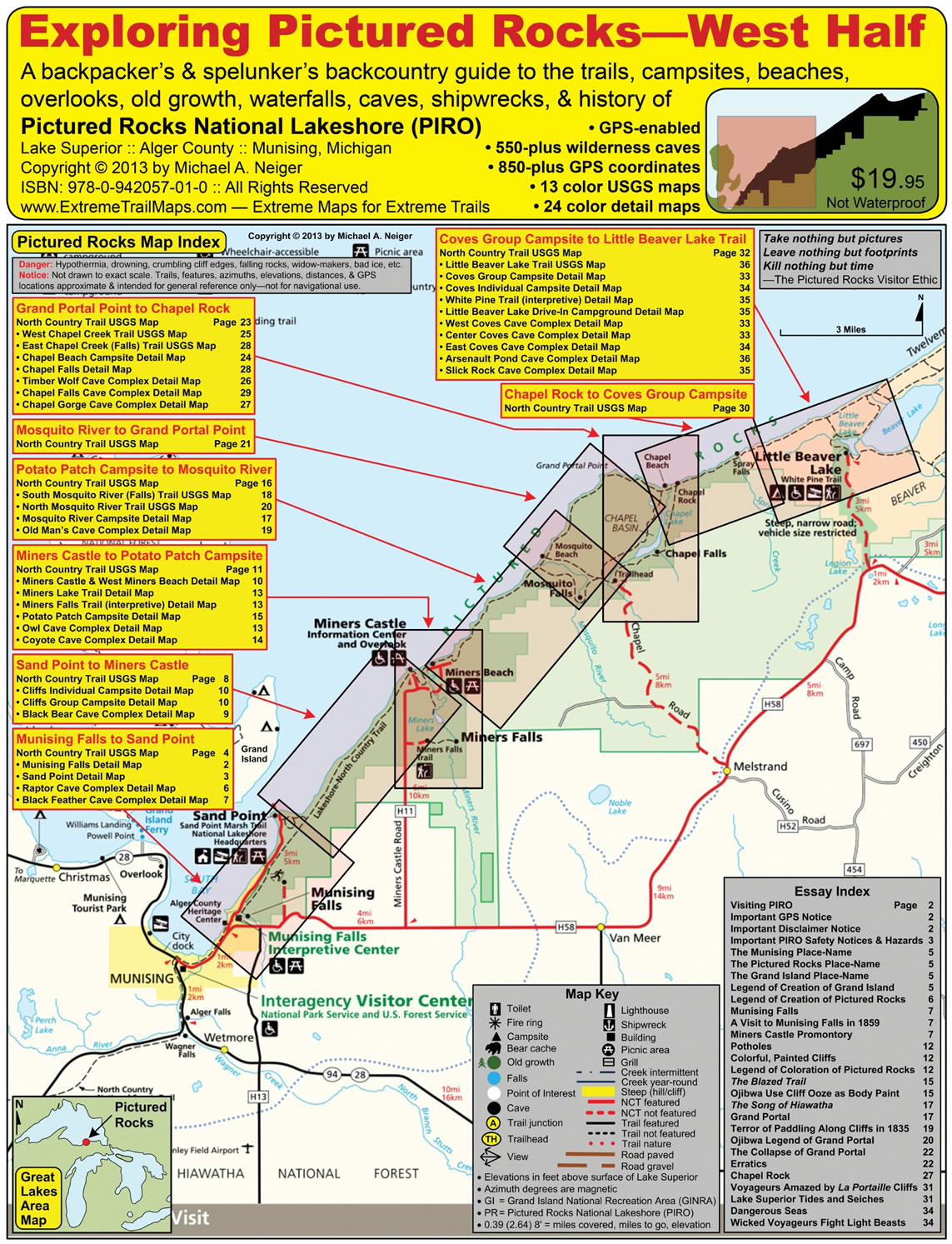 |
|
| Exploring Pictured Rocks West, by Michael Neiger (Click to enlarge) | |
Topping the list of grottos we'll visit is The Mother of All Wilderness Caves in the Lakeshore's backcountry — The Amphitheater.
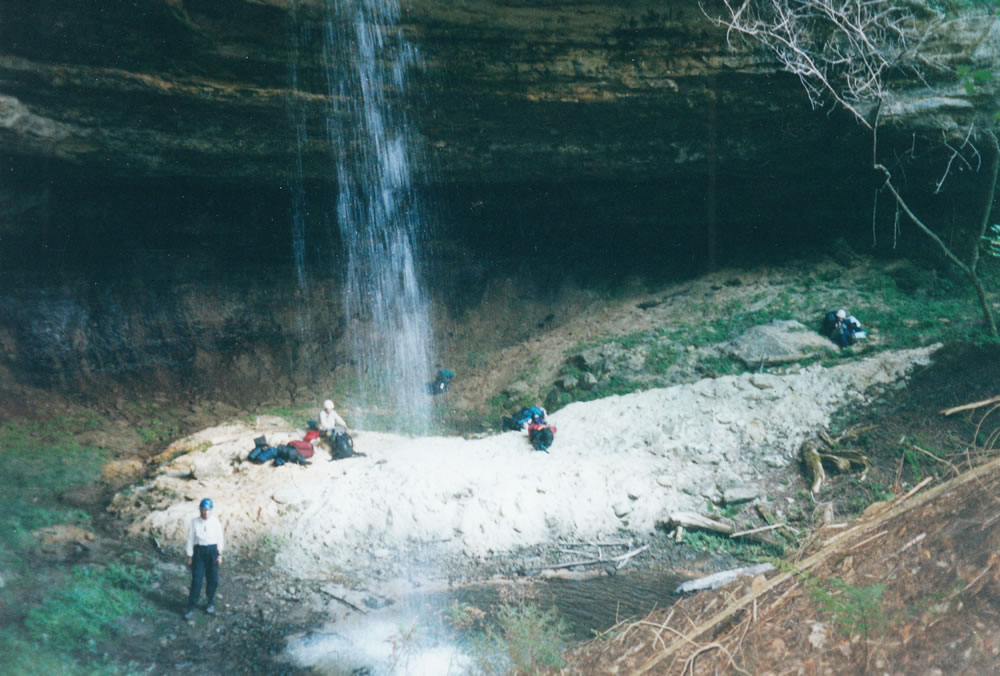 |
| The 2,000-person Amphitheater — located 1.25 miles inland from the Lake Superior shoreline — on Michael Neiger's September 2001 Sierra Club Pictured Rocks Backpacking & Caving Wilderness Trip. (Photo by Gail Staisil, click to enlarge) |
This seldom-visited cavern can hold about 2,000 people — standing shoulder to shoulder — and has its own 49-foot waterfall pouring over the top of the cave and into a small pool in front of it. It's situated deep in the backcountry of Pictured Rocks National Lakeshore, about 1.5 miles inland from Lake Superior.
We'll be exploring the Amphitheater, replenishing our water stores from its waterfall, maybe cooling ourselves in it, and likely enjoying a long lunch inside the cave, next to the falls.

Lunch in a grotto — located 1.5 miles inland from the Lake Superior shoreline — on Michael Neiger's September 2001 Sierra Club Pictured Rocks Backpacking & Caving Wilderness Trip. (Photo by Mary Powell, click to enlarge)
- Type: Backpacking & spelunking
- Destination: Pictured Rocks National Lakeshore (PRNL), between Munising and Grand Marais in Alger County, Michigan
- When: 9:00 a.m. Friday, July 3, to 5:00 p.m. Monday, July 6, 2020
• Registration process: After thoroughly reviewing this webpage, reserve a spot on this trip by joining the Michigan Hiking and Backpacking Facebook Private Group; clicking on the "Event" tab; clicking on the "going" tab for this trip; and sending Michael Neiger a 'friend request' and private message, after which he will send you a liability waiver form and a class registration form to print-out, fill-out, and return by snail mail.
NOTE: If you are interested in being part of the point land-navigation team on this trip, or learning more about navigation from them, please let the organizer know.
• Cost: Free, participants pay their own expenses, share any group expenses (none)
• Participant limit: Six (6), plus leader, and assistant leader.
• Sign-up deadline: July 10, 2020 - Trip Leadership:
-
Organizer & Trip Leader: Michael Neiger, Founder & Lead Investigator with the Long Range Special Operations Group (LRSOG), Michigan Backcountry Search and Rescue (MibSAR), Marquette, Michigan, Facebook, website, bio, mneiger@hotmail.com
MibSAR -
Assistant Trip Leader: Todd Theoret, Owner & Lead Instructor at Diversity Wilderness Earth Living, Marquette, Michigan, Facebook, website, bio, todd@diversitywilderness.com
DWELL
-
- Level: Intermediate-level backpacking & spelunking
- Physical fitness: Participants must be very physically fit (workout regularly), capable of hiking with a heavy ruck through steep, tangled, muddy, slippery, swampy bush each day, with breaks every hour, plus a 1-hour lunch break. Before participating in a strenuous multi-day adventure like this one, participants should consider getting:
- A comprehensive physical exam
- A stress test
- Their doctor's approval
- A thorough dental exam
- Prerequisites: A participant must
- be 18 years old or older
- a non-smoker
- have completed several backpacking trips
- be fully equipped for bushwhacking and bivouacking in hot, cold, wet, windy, buggy conditions
- be a proficient swimmer
- have an adventurous spirit with a strong mind and body
- agree not to carry or wear cotton clothing — no cotton bras, t-shirts, undershorts, underwear, pants, jeans, shirts, jackets, sweatshirts, etc. — other than a bandanna, as they are deadly when damp (think hypothermia), and it is impossible to dry them out in foul weather.
- Banned: Participants should leave these at home, or in their vehicles:
- Firearms
- Alcohol
- Tobacco
- Non-prescription narcotics
- Cotton clothing
- Pets
- Speaker radios
-
CDC COVID-19 protocols for this trip/exped/class:
COVID-19 - Try to maintain 6-foot spacing intervals
- Try to wash hands often, especially after contacting any shared surface
- Try to clean shared surfaces regularly
- Try to wear a mask (cloth face mask) when in close-quarters (e.g.: when point land-nav team members are working closely, first-aid situations, etc.)
- Monitor ourselves and each other for symptoms of COVID-19
- More COVID-19 info from the CDC
- Campfires: No campfires or twig-burning stoves are permitted on this trip.
- Bivouac notice: We will be bivouacking in the bush outside of the Lakeshore, wherever we can find a place to lay down when the sun sets. Our unscouted bivouacs will be very rugged and astere, with absolutely no amenities:
- No toilet facilities, so you will have to bury your human waste and toilet paper (do not burn it due fire hazard)
- No water, so plan on humping several quarts of water from our last afternoon water source, enough to finish up the afternoon's bushwhack, boil-up dinner, boil-up breakfast, and bushwhack a bit in the morning, until we come across a water source.
- No garbage facilities, so please pack it out, don't litter.
- No bear caches, so please hang your water-proof food bag so it is 10' off the ground, 4' below the limb, and 4' out from the tree trunk (a 1/8-inch-diameter, 40- to 50-foot-long chunk of slippery rope offers the most flexibility when hanging food).
- No tent sites
- Ration list:
- 3 Breakfast modules
- 4 Snack modules
- 4 Lunch modules
- 3 Dinner modules
- 1 24-hour Back-up module (should be high-energy, ready-to-eat finger food)
- Packaging tip: Package primary rations and back-up rations in heavy-duty, freezer-grade, ziplock plastic bags so they are waterproof, protected from rain and wet snow, as well as moisture from swamps, rivers, and lakes.
- Permits: No PRNL permits are needed since we will be bivouacking outside the Lakeshore
- Pre-trip assembly location: Map with driving directions provided to participants via email as trip nears.
- Emergency contacts:
- All emergencies 911
- Alger County Sheriff 906.387.4444
- Michigan State Police 906.475.9922
- Munising Memorial Hospital 906.387.4110
- Tourism info:
- On-person survival kit: Several participants have become lost or separated from the group on past trips — especially when walking around a bivouac spot, such as when going to the bathroom or hanging their food at night, or going on a short walk to take a picture, watch a sunset, or replenish water stores — so make sure you have your essential survival items in your pockets, not in your ruck, which may be sitting on the ground in camp or at a break spot.
NOTE: Each item should be attached to a thin cord lanyard (Sterling 1.5 mm Mini Cord recommended), a loop on the end of which is then attached to a belt loop, button hole, or safety pin (attached to the inside of a pocket) to prevent accidental loss from your cargo pants pockets. Again, these items should NOT be carried in your ruck as you may become separated from your ruck, for a variety of reasons, and be left to survive with just what is in your pockets.• Pocket knife with locking blade
• Whistle (plastic so it does not stick to your lips in the winter, and pealess so it does not jam with sand, snow, etc.)
• Windproof, waterproof, lifeboat matches
• Adjustable-flame butane lighter
• Waterproof, spark-ignitable fire-starters (must not require a flame, just a spark!!; SOL Tinder Quik is highly recommended)
• Magnesium fire-starter (avoid cheap models as the striker falls off when glue fails; get a Mil-Spec unit used in U.S. Military survival kits — an authentic Doan
• Small high-quality compass
• Signal mirror (protect reflective surface)
• Emergency blanket (2-person rip-proof SOL Survival Blanket is high recommended; put four lengths of 1.5-mm cordage in package to rig as overhead tarp, or fold over and tie together as a bivy sack)
• Single-AAA aircraft-grade aluminum flashlight with long-life, deep-cold, lithium battery (wrap rubberband around switch-joint to prevent twist-on units from accidentally turning on; Fenix E05 recommended)
- Hypothermia: The organizer has had to intervene on several cases of hypothermia in the past, 5 times in one year alone. These incidents were largely the result of trippers who were trying to go ultra-light and were not carrying the multiple, redundant layers of clothing as recommended. Reversing hypothermia takes hours of work on the part of others on the trip — a lot more work than is required to pack a couple extra pounds of warm synthetic clothing.
- Eye-injuries: Always wear eye-protection when hiking in the woods as in the past, participants have sustained serious eye injuries from branches, etc.
- Bee-sting allergies: If you may be allergic to bee stings, notify everyone on the trip and carry an injectable epinephrine unit, such as an EpiPen or Ana-Kit, as prescribed by your doctor.
- Personal responsibility: A participant's failure to physically train and mentally prepare oneself for a harsh wilderness trip; acquire the necessary skills and equipment for the trip; and recognize, take responsibility for, and avoid the unknown and unpredictable hazards and perils that often present themselves on such a trip may result in serious injury, paralysis, or a slow, painful death. There is no emergency medical equipment, doctor, nurse, or other trained emergency medical provider on wilderness trips.
- Rescue services: Search and rescue services, emergency medical care, and evacuation of the non-ambulatory may be very difficult and costly to arrange on wilderness trips; in some cases, the wait could be very long, painful, and fatal. On wilderness trips through remote areas in Michigan and Canada, it may take considerable time, perhaps even several days of rigorous travel by uninjured volunteers, before emergency medical personnel or rescue personnel can be contacted for help. In the meantime, the organizer and other participants will only be able to provide the most rudimentary of first aid with nominal first-aid items gathered-up from willing participants.
- Emergency comm: There is no immediate means of contacting emergency medical personnel or rescue personnel on this wilderness trip. A cell phone will likely not work on this trip. If emergency communication equipment is important to you, consider the following:
- Purchase or rent a satellite phone by Iridium, Globalstar, Inmarsat, or Thuraya:
- Purchase or rent: Satmodo
- Purchase or rent a 406 MHz personal locator beacon (PLB) by McMurdo, ACR, or Ocean Signal which directly activate the international search and rescue satellite aided tracking (SARSAT) emergency signaling system run by NOAA.
- Purchase: REI
- Rent: PLB Rentals
- Purchase or rent a satellite emergency notification device (SEND) unit by InReach, SPOT, or Garmin, that rely on private commercial operations to activate the international search and rescue satellite aided tracking (SARSAT) system run by NOAA.
- Purchase: REI or West Marine
- Rent: Outdoors Geek
- Purchase or rent a satellite phone by Iridium, Globalstar, Inmarsat, or Thuraya:
- Insurance: No insurance is provided to trip participants by the organizer, so give serious consideration to purchasing:
- Evacuation insurance
- Trip cancellation insurance
- Medical insurance
- Prescription insurance
- Dental insurance
- Disability insurance
- Life insurance
- Water & snack consumption: Some participants on past trips have failed to drink enough water and eat enough snacks at regular intervals to avoid dehydration or hypothermia because their water bottle and snack bag were buried in their rucksack where they could not access them without stopping and removing their ruck.
- Avoid this dangerous habit by carrying your water bottle and snacks in pouches mounted on the waist belt of your rucksack for easy, on-the-go access.
- Fireproof stove base: Unless your stove rests atop a canister or fuel tank, please bring a fire-proof base for it as participants have started ground fires in the past.
- Water: Bring an adequate amount of water to the trip assembly area as water is often not available where wilderness trips start.
- Equipment waterproofing: To help keep your gear dry, line the main compartment of your rucksack with a huge 55-gallon, heavy-duty, 3-mil-thick "contractor-grade" garbage bag; put sleeping bags, clothing, insulating outwear, rations, and other water-sensitive items in smaller, roll-top stuff sacks before placing them inside the plastic-bag-lined rucksack. Lastly, twist the top, unused-portion the plastic bag together and tuck it down inside the rucksack. If you're going to be doing some deep-water fording, or swimming a river, lake, or marsh, fold the twisted neck of the plastic bag back over on itself and tie it tightly with a piece of cordage. A rain cover can further protect the contents of a ruck in foul weather.
- Biting insects: To manage biting insects — mosquitoes, no-see-ums, black flies, beach flies, and ticks — consider the following proven tactics:
- Wear loose-fitting, light-colored cargo pants and a long-sleeve shirt; a partial or full head net under a light-colored, wide-brimmed boonie hat; and possibly thin gloves, depending on your personal preference and bush experience.
-
Treat your gaiters, cargo pants, shirt, head net, and boonie hat with permethrin to reduce the number of biting insects that will crawl on (and under or through openings) your clothing as well as bite through them.
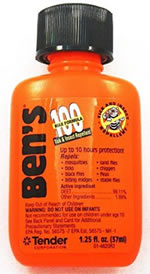
- Lastly, cover exposed skin with 100-percent DEET. If you are going to bring a natural alternative, please bring a back-up bottle of 100-percent DEET, or it could be a long trip for you, if your choice of repellent does not cut it, and most don't under challenging conditions. Using duct tape, attach a lanyard to your bottle of DEET so you don't loose it. Thread a loop in the opposite end of the lanyard through a button hole, belt loop, or safety pin clipped to the inside of a pocket.
- If bug bites tend to irritate you, carry an after-bite treatment stick or other remedy.
- Long-term parking: To reduce the chances your vehicle will be vandalized, always lock it up, keep valuables out of sight, and install a locking gas cap.
- Safety around wild animals: If you are concerned for your safety with regard to wild animals — bears, cougars, wolves, coyotes, etc. — consider carrying bear spray
-
Bivouacking on land owned by the State of Michigan: There is a substantial fine for camping on land owned by the State of Michigan without posting a Camp Registration Card, which is available from the Michigan DNR for free.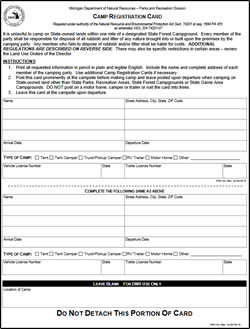
- Bivouacking on land owned by the Province of Ontario: There is a substantial fine for camping on land owned by the Province of Ontario in Canada without purchasing a daily Crown Land Camping Permit
-
Exploring Pictured Rocks NPS map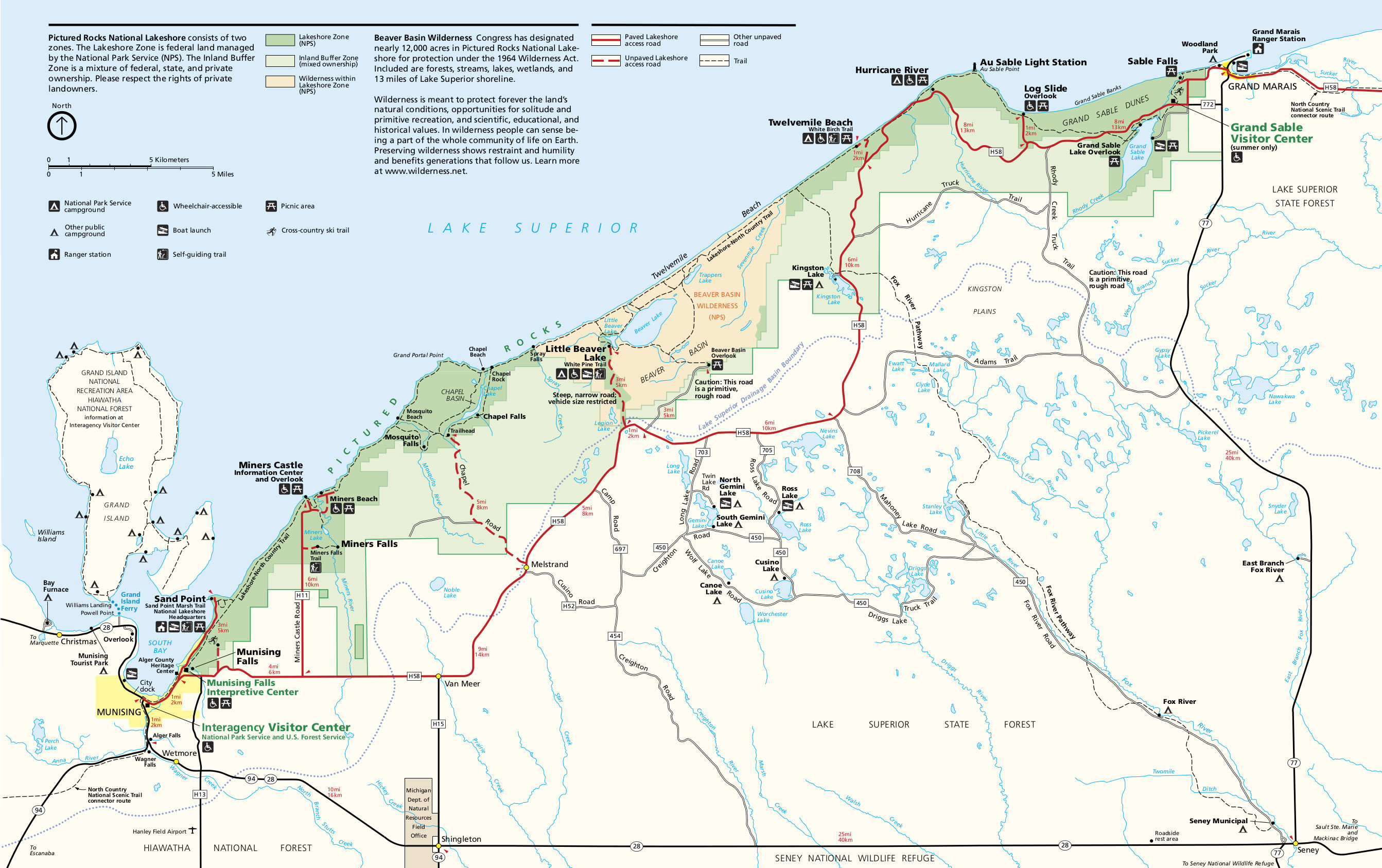
Exploring Pictured Rocks NPS map (Click to enlarge)
Custom USGS topographic quad from organizer
-
Custom 1:24,000 USGS quad for Miners Basin Cave Complex operation, courtesy of organizer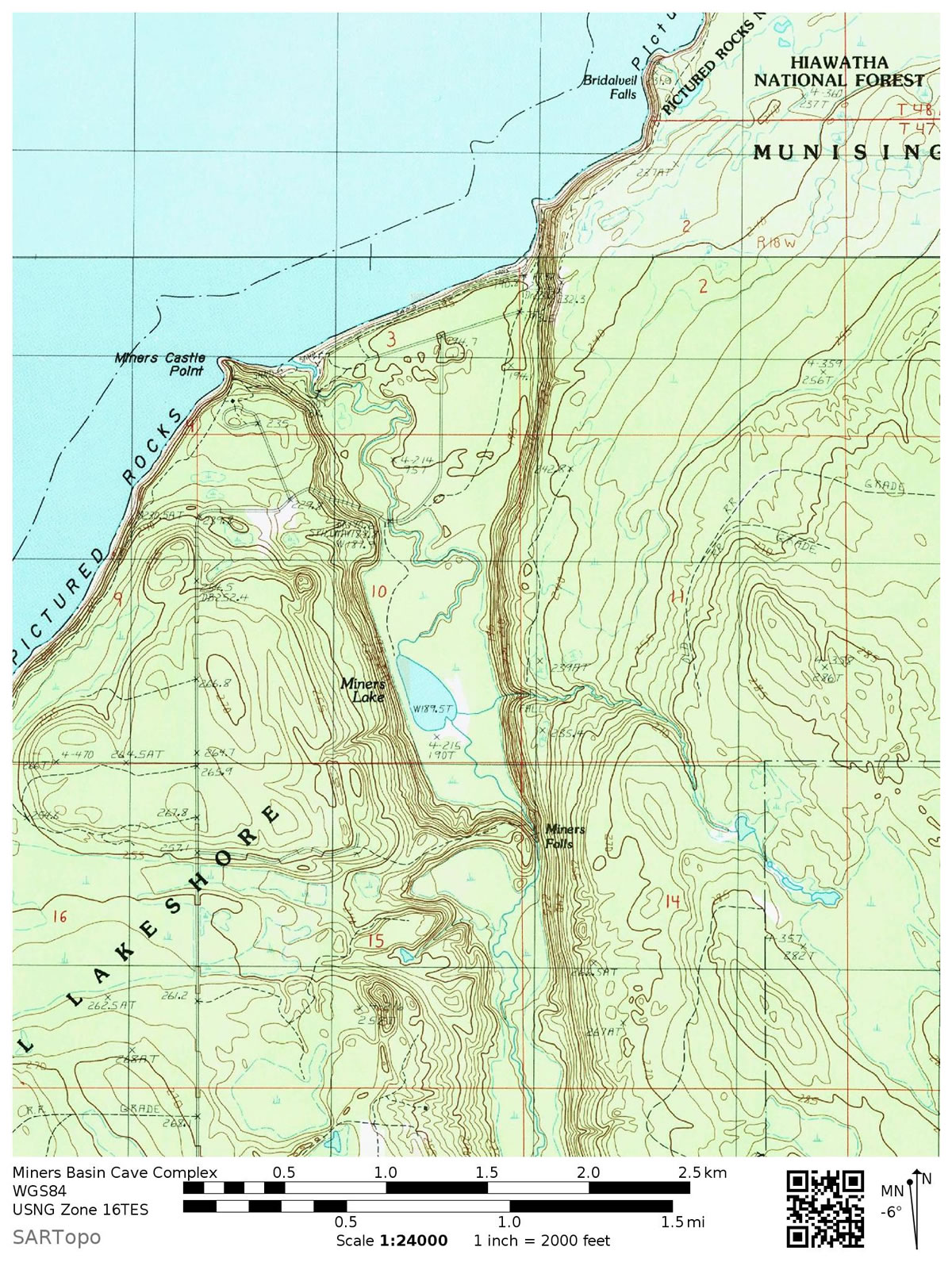
Miners Basin Cave Complex (Click to enlarge)
-
Custom 1:24,000 USGS quad for Chapel Basin Cave Complex operation, courtesy of organizer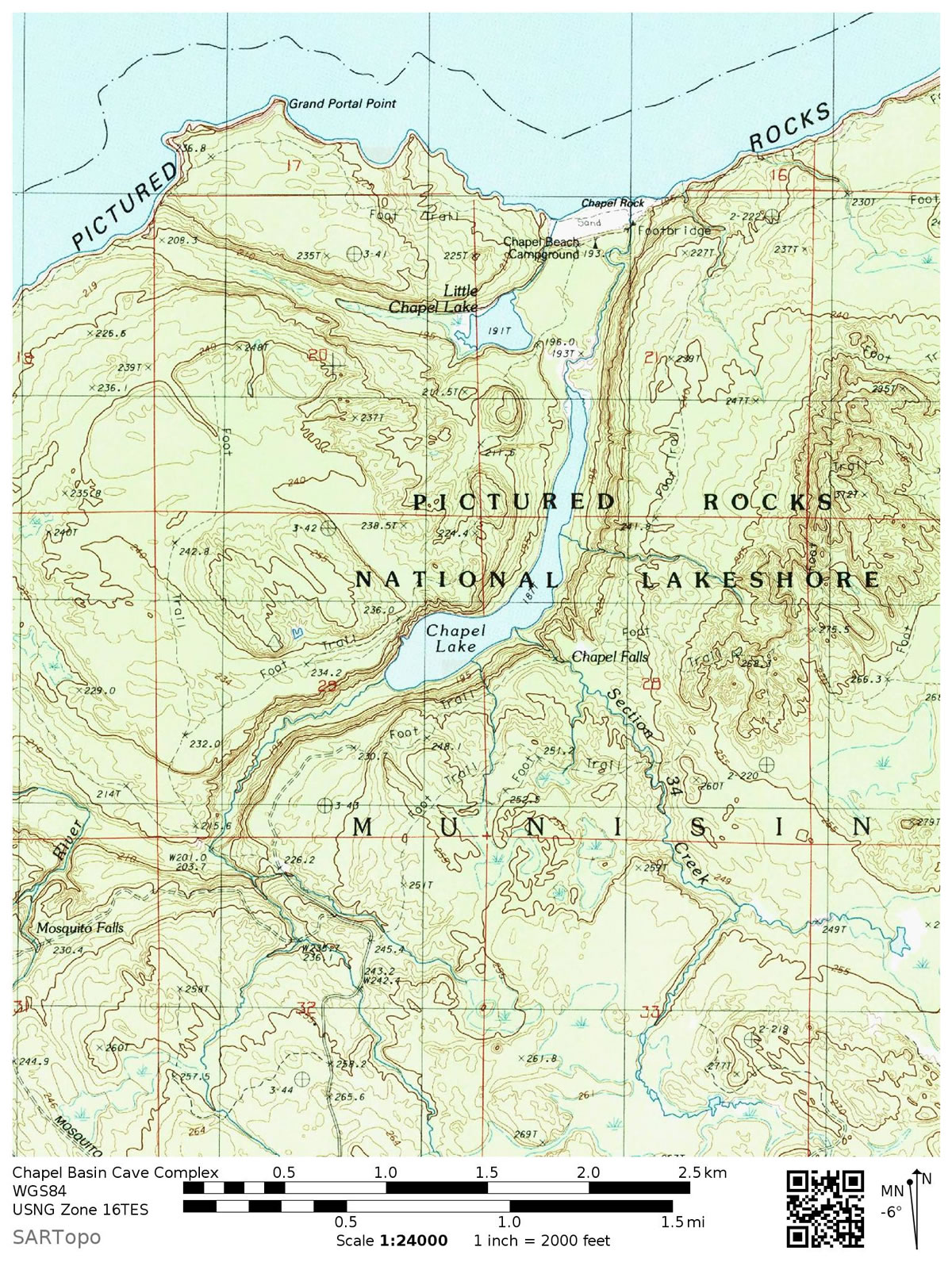
Chapel Basin Cave Complex (Click to enlarge)
-
Full set of 7 custom 1:24,000 USGS quads for this trip, courtesy of organizer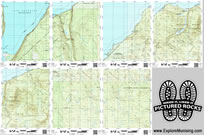
Full set of 7 custom 1:24,000 USGS quads for this trip
Optional full-sheet USGS topographic quads
-
1:24,000 1984 Indian Town, Michigan
USGS Logo - 1:24,000 1984 Wood Island SE, Michigan
- 1:25,000 1983 Melstrand, Michigan
- 1:25,000 1983 Grand Portal Point, Michigan
USGS map source for purchasing hard-copies, or downloading free PDFs for printing out on a plotter at a local print shop, architectural business, or builders exchange (avoid ink-jet printers/plotters as the print is not waterproof, and will run): USGS Store
Map waterproofing
Bush compass rose (for point land nav team)
-
Compass rose for our area of operation
Bush compass rose (Click to enlarge)
- May 2020 magnetic declination for meridian of longitude lines:
- 05° 50' west
- 05° 50' west
- Deviation of UTM easting grid lines from meridian of longitude lines:
- 00° 22' east
- 00° 22' east
- Magnetic declination of UTM easting grid lines:
- 06° 13' west (we correct for this figure, rounded to the nearest degree, in the bush)
GPS setup (for point land nav team)
- Grid coordinate system
- 1000-meter Universal Transverse Mercator Grid (UTM)
- UTM grid horizontal map datum:
- 1983 North American Datum (NAD 83)
- UTM grid zone:
- Zone 16
- UTM grid hemisphere:
- Northern hemisphere
- Unit of measure:
- Metric
- Battery type:
- Lithium, for deep cold, or long-range use
- Alkaline, for 3-season use
- Battery type setting:
- Select correct type of battery (lithium, alkaline, or Ni-Cad) as battery discharge-rate differences affect meter accuracy
Misc land nav equip setup (for point land nav team)
- Roamer UTM plotter scales:
- Michigan quads 1:24,000 & 1:25,000
- Canadian quads 1:20,000 & 1:50,000
- Ranger pace-county beads:
- Nine 100-meter beads; four 1-kilometer beads
- Magnetic declination setting on compass:
- 0° of offset (zero-out as point land nav team will manually compensate for declination so azimuths will work on all compasses)
Required gear
-
COVID-19 face mask for close-quarters work with other trip participants
-
Hand sanitizer for cleaning hands as needed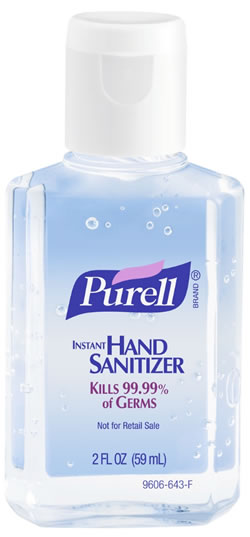
-
Climbing or caving helmet, for protection against falling rocks and widow-makers, and slip-and-falls.
NOTE: All trip participants must have a UIAA*- or CEN**-approved, chin-strap-equipped, climbing or caving helmet for protection against slip-and-falls, dislodged logs, falling rocks, etc. Paddling, biking, or other types of helmets are not suitable and not permitted.
*UIAA: Union Internationale des Associations d'Alpinisme or International Mountaineering and Climbing Federation
**CEN: Comite Europeen de Normalisation or European Committee for Standardization
If you don't have the appropriately rated helmet, and don't want to purchase one, you may be able to rent one in your area by checking with ice and rock climbing shops.
- Sturdy, waterproof, off-trail hiking boots
- Short gaiters to seal tops of boots and keep out rain, mud, sand, gravel, and forest debris
- River fording shoes/sandals
In-pocket's survival gear
- Pocket knife with locking blade
- Whistle (plastic so it does not stick to your lips in the winter, and pea-less so it does not jam or foul with sand, snow, etc.)
- Windproof, waterproof, lifeboat matches
- Adjustable-flame butane lighter
- Waterproof, spark-ignitable fire-starters (must not require a flame, just a spark!!; SOL Tinder Quik is highly recommended)
- Magnesium fire-starter (avoid cheap models as the striker falls off when glue fails; get a Mil-Spec unit used in U.S. Military survival kits — an authentic Doan
- Small high-quality compass
- Signal mirror (protect reflective surface)
- Emergency blanket (2-person rip-proof SOL Survival Blanket is high recommended; put four lengths of 1.5-mm cordage in package to rig as overhead tarp, or fold over and tie together as a bivy sack)
- Single-AAA aircraft-grade aluminum flashlight with long-life, deep-cold, lithium battery (wrap rubberband around switch-joint to prevent twist-on units from accidentally turning on; Fenix E05 recommended)
NOTE: Each item should be attached to a thin cord lanyard (Sterling 1.5 mm Mini Cord recommended), a loop on the end of which is then attached to a belt loop, button hole, or safety pin (attached to the inside of a pocket) to prevent accidental loss from your cargo pants pockets. These items should NOT be carried in your ruck as you may become separated from your ruck, for a variety of reasons, and be left to survive with just what is in your pockets.
Rucksack gear
- Large rucksack lined with heavy-duty, 3-mil-thick, contractor-grade plastic bag
- Raincover (optional)
- Waist-belt-mounted water bottle parka
- Waist-belt-mounted snack pouch
- Waist-belt-mounted pouch for nav gear (optional)
NOTE: Waste-mounted water-bottle and snack pouches are essential for staying properly hydrated and fueled while underway.
NOTE: To help keep your gear dry, put sleeping bags, insulating outwear, and other water-sensitive items in roll-top stuff sacks. Next, line the main compartment of your rucksack with a huge 55-gallon, heavy-duty, 3-mil-thick "contractor grade" garbage bag. Next, twist the top unused portion the bag together and tuck it down inside the rucksack. A rain cover can further protect a ruck in foul weather. In a survival situation, this huge durable bag can double as a poncho, after cutting head and arm holes; serve as a 3/4 bivy sack; or, when partially cut apart, function as a blanket or ground cloth.
First-aid kit
- Elastic ankle wrap
- Moleskin
- Vaseline
- Band-Aids
- Waterproof first-aid tape
- Pain relief medication
- Anti-inflammatory medication
- Personal medications
- Other medications and first-aid items as recommended by your doctor or a trusted medical professional
NOTE: Package first-aid kit items in a heavy-duty, freezer-grade, ziplock plastic bag so they are waterproof, protected from rain and wet snow, as well as moisture from swamps, rivers, and lakes.
Repair kit
- Duct tape (small roll)
- Sewing kit
- Repair kit for inflatable sleeping pad
- Repair kit for backpacking stove
Head gear
- 1 very thin balaclava
- 2 thick hats that can be worn together
- 1 pair of sun/safety glasses (for bushwhacking; avoid dark lens if you have difficulty seeing through them in shady areas under heavy canopy)
- Prescription glasses (spare if important)
- Bandanna (this should be the ONLY cotton item in your kit)
- Boonie hat (sun, optional)
- Rain hat (optional)
Upper-body gear
- 3 or 4 thin polypro tops
- 2 thick fleece or micro-fiber-insulated jackets (hood is very handy).
- 1 thin breathable nylon windshirt/anorak (hood is handy)
- 1 nylon rain parka (should fit over all insulating layers for cold, rainy, windy weather; no plastic, no ponchos)
- A heavily-insulated parka with hood is advisable on early spring and late fall trips
Hand gear
- 1 pair of light mittens
- 1 pair of rain mitts
Lower-body gear
- 1 pair of 1/4-inch thick fleece or micro-fiber-insulated pants (full, side-separating zippers are ideal for adding or removing them while underway, or on a break, without taking pants and boots off); carry a second pair in spring and fall)
- 1 pair of thin polypro long underwear (full, side-separating zippers are ideal for adding or removing them while underway, or on a break, without taking pants and boots off)
- 1 pair of all-synthetic, light-colored cargo pants (non-DWR-treated and breathable for hot weather, and loose for buggy conditions)
- 1 pair of nylon rain pants (should fit over all insulating layers; no plastic)
Footwear
- 1 pair of sturdy, waterproof, boots
- 3 pair of thick synthetic socks
- 1 pair of short gaiters (to keep water, rain, mud, and forest debris out of boots)
- 1 pair of river fording shoes/sandals
Bivouac gear
- Tarp and bivy sack; or small tent with vestibule/fly to cook under when raining
- Stakes and ropes to rig tarp or tent
- 20 degree sleeping bag
- Closed-cell sleeping pad (carry repair kit for inflatable pads)
- LED headlamp
- Spare batteries for headlamp (lithium in deep cold)
- 9-hour candle
Bug-management gear (hot weather trips)
- 1 bottle of 100% DEET (attach thin cord lanyard to avoid loss when bushwhacking)
- 1 spare bottle of 100% DEET
- 1 headnet
- 1 spare headnet
Navigation gear
- GPS (optional)
- Spare batteries for GPS (lithium in deep cold)
- High-quality, liquid-filled,base-plate compass
- High-quality, liquid-filled, wrist compass (optional)
- USGS topographic maps of area
- Park or county map for area
- Protractor (if not carrying non-baseplate compass)
- UTM Roamer plotter (optional)
- Ranger pace-counting beads (optional)
- Waterproof notepaper
- Waterproof pen (optional)
- Pencil
Hydration gear
- 2 to 4 one-quart durable water bottles
- 1 two-quart water bladder for hauling untreated water stores to bivy site
- Water purification system (iodine tablets recommended; attach a lanyard to bottle to prevent loss)
- 1 spare bottle of iodine tablets (in case of loss or moisture damage)
- Repair kit for water purification systems
NOTE: Water-hauling capacity must total 4 to 6 quarts for dry bivy sites, where we pick up water mid-afternoon and can't replenish water stores until late morning the following day.
NOTE: If you have bladders or bottles you don't want to put untreated water in — when we scoup water and go, while enroute and wearing our rucks — please bring separate bottles/bladders for transporting untreated water until it can be filtered or treated on a break or in camp..
Ration-heating gear
- NATO solid-fuel stove, or lightweight backpacking stove
- Solid fuel tabs for NATO stove or fuel for backpacking stove
- Repair kit for backpacking stove
- Lighter
- Windscreen for stove
- Fireproof base for stove
- Pot holder
- Pot
- Lid for pot
- Spoon
- Mug
- 50-foot food-hanging rope (use cheap, hard, 1/8-inch-diameter, SLIPPERY rope to reach high limbs, and haul a heavy food bag up on a with high-friction-bark limb)
Personal items
- Personal medications
- Driver's license
- Passport (for Canadian trips)
- Emergency phone numbers
- Credit cards
- Cash and travelers checks
- Medical and dental insurance cards
- Sunscreen
- Lip balm with sunblock
- Petroleum jelly
- Wrist chronograph
- Paperback book (optional)
Personal hygiene gear
- Toilet paper (double waterproofed)
- Synthetic pack towel
- Toothbrush
- Toothpowder
- Toothpicks & dental floss
- Handcleaner (optional)
- Plastic cat-hole spade (optional)
Vehicle gear
- Extra car key on lanyard
- Vehicle registration papers
- Vehicle insurance papers
- Locking gas cap
- Road map (Michigan 1-800-292-2520; Canada 1-800-268-3736)
- County map book of Michigan
- Spare tire (check pressure!!)
- Tire jack and lug nut wrench
- Shovel (spade in summer)
- Vehicle safety checks:
- Tire pressure
- Wiper blades
- Wiper fluid
- Oil level
- Radiator fluid
- Transmission fluid
- Battery condition checked
- Jumper cables (optional)
- Nylon tow strap (optional)
- Axe (optional)
- Bow saw (optional)
- Hi-lift bumper jack (optional)
- Hand-operated winch (optional)

Free Upcoming Trips, Expeditions, and Wilderness Skills Classes
(subject to change)
August 7-9, 2020, MibSAR Basic & Advanced Land Navigation Class, Hiawatha National Forest, Chippewa County, Abandoned Raco Army Airflield, Raco, Michigan
September 4-7, 2020, Sierra Club Grand Island National Recreation Area Backpacking Trip, Alger County, Munising, Michigan
October 2-5, 2020, Sierra Club Fox River Wilderness Canoe Trip, Schoolcraft County, Germfask, Michigan
December 4-7, 2020, Sierra Club Winter Backpacking Trip, Pigeon River Country State Forest, Otsego County, Vanderbilt, Michigan
January 27-31, Sierra Club 5-day Snowshoe-and-Sledge Winter-Camping Trip, Alger County Highlands, Munising, Michigan
February/March, Sierra Club 15-day Snowshoe-and-Sledge Canadian Arctic Ocean Expedition, Ontario, Canada
~~~~
The best way to convince people
to defend
the wild areas
is to take them out and let them see wild splendor for themselves.
— John Muir 1838-1914
Also known as the Father of the National Parks, Muir was an influential Scottish-American naturalist, author, environmental philosopher, glaciologist, and early advocate for the preservation of wilderness in the United States of America.
